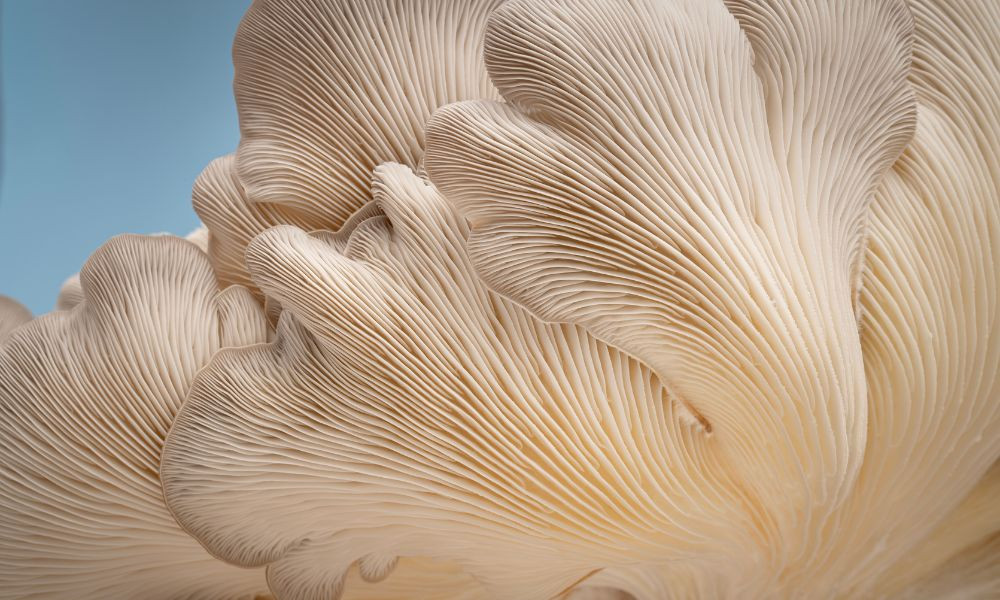Top 8 Gourmet Mushrooms You Can Grow at Home
Posted by admin on Oct 19th 2023

With urban gardening on the rise and the demand for organic produce skyrocketing, growing food at home has become an increasingly popular hobby. Many folks focus on growing fruits and vegetables, but don’t discount the nutritional and educational power of fungi! Mushrooms are fantastic additions to any home garden or growing setup. They’re not just delicious—they also offer an impressive nutritional profile and long-term health benefits. Let’s explore some of the most popular gourmet mushrooms you can grow at home. Whether you’re a seasoned or beginner grower, Spore Genetics has you covered.
Shiitake
A favorite in many Asian cuisines, shiitake mushrooms are widely known for their rich, savory umami flavor. They boast a firm, pleasing texture and can be used in soups, in stir-fries, and even as meat substitutes. Adding shiitakes to your diet will give you a crucial boost in nutrients such as copper, zinc, and vitamin B.
Shiitake mushrooms grow well in hardwood logs such as oak or maple as well in as dense wood-based substrates such as sawdust blocks. Like other fungi, shiitake mushrooms require shady, moist environments to fruit properly.
Oyster
A versatile, flavorful variety with a delicate texture, oyster mushrooms are rich in protein and essential minerals. They range in color from pale white to golden yellow and blush pink, and they’re common additions to soups, salads, and pasta dishes.
Want to grow your own oyster mushrooms at home? You’re in luck: they flourish in a variety of substrates and can easily be grown in spawn bags. Inoculate your substrate or spawn bag with gourmet mushroom spores and wait for that mycelium to spread!
Lion’s Mane
Resembling little white pom-poms or a cluster of cauliflower, these mushrooms have a unique appearance. Their seafood-like flavor and meaty texture make them popular substitutes for crab or lobster in vegan dishes. Plus, they are known for their cognition-enhancing properties and have been shown to improve memory and concentration.
To grow lion’s mane mushrooms efficiently at home, you’ll need a temperate environment (between 60 and 70 degrees Fahrenheit) with at least 70 percent humidity. Inoculate a grain spawn bag with your spores or grow them the old-fashioned way on a shady log outdoors, if weather permits.
Morel
Foodies love the nutty, earthy flavor of morel mushrooms. They’re popular additions to a variety of sauces, risottos, and even omelets. In nature, you’ll often find them in heavily wooded areas, especially during the spring. These little wonders are prized for their unique flavor and texture, and they’re known to be rich in nutrients such as potassium and vitamin D.
Morel mushrooms prefer cool, moist weather; they grow best in areas with several weeks of freezing winter and a definite transition to spring. If you choose to grow your morels indoors in a controlled environment, make sure you moisten the substrate regularly and drain off excess water.
Enoki
Enoki mushrooms are delicate, slender fungi with a slightly sweet and even fruity flavor. They pair well with salads and stir-fries, and they’re low in calories, high in protein, and rich in vitamins B and D. These mushrooms have been essential parts of Chinese traditional medicine for centuries, and their immune-boosting properties are well-known.
To grow enoki mushrooms at home, you can use a growing kit with a spawn block. Enoki mushrooms don’t require as much light as other varieties, so keep your growing setup dark and moist, the temperature cool, and the air circulation high.
Maitake
These mushrooms have a rich, earthy flavor and a meaty texture, making them favorites in many dishes. These mushrooms add extra depth and dimension to a variety of meals, from soups and stews to creative sautés. Rich in antioxidants and said to have anti-inflammatory properties, they’re also called the “hen of the woods” due to their distinctive appearance.
If you want to grow your very own maitake mushrooms, the first tool you’ll need is patience. These mushrooms can take up to two years to mature, and their preferred growing environment is in or near older hardwood trees. However, they also grow well from kits as long as you’re diligent about maintaining moisture levels.
Chanterelle
These tasty mushrooms boast a fruity, peppery flavor with a slight apricot aroma, which make them popular additions to sauces and risottos. They’re excellent sources of dietary fiber as well as polysaccharides, which prevent cell damage and encourage proper immune function.
Growing chanterelle mushrooms at home can be challenging, as their incubation period is longer than that of many other varieties. They also require specific growing conditions. Keep your growing environment cool and moist, and use a grow kit or a rotting log to provide the spores with the nutrients they need to flourish.
Porcini
Porcini mushrooms have a rich, nutty flavor and are excellent additions to pasta dishes and sauces. They’re rich in antioxidants and vitamin D, both of which contribute to reduced inflammation and an improved immune response to common illnesses.
Growing porcini mushrooms from scratch can be finicky if you’re trying to do so outdoors in a natural environment. However, growing them indoors with a spore syringe and a spawn bag offers you greater control over the grow conditions. Be patient with your porcinis, as they can take up to 18 months to fruit into recognizable, tasty mushrooms.
Growing gourmet mushrooms at home can be a fun, rewarding experience for amateur mycologists and experienced growers alike. Each mushroom species has its own growth requirements, but with proper care and attention, growing delicious, nutritious mushrooms in your own home is possible. From the earthy flavor profile of porcini mushrooms to the meaty taste of chanterelles, mushrooms open up a world of culinary and nutritional possibilities. There are countless gourmet mushroom varieties to choose from as you embark on your mycological journey!
By growing your own mushrooms, you can provide yourself with a healthy food source and engage in a sustainable practice that reduces your carbon footprint. So why not give it a try? With a little patience and some basic knowledge of mycology, you can become a gourmet grower and enjoy the freshest possible mushrooms from your own home.


